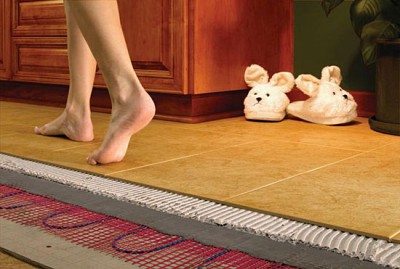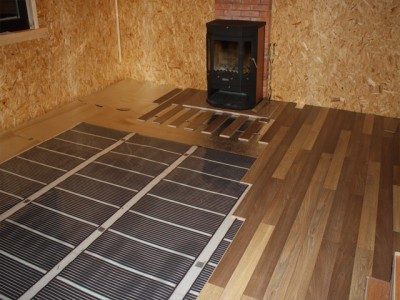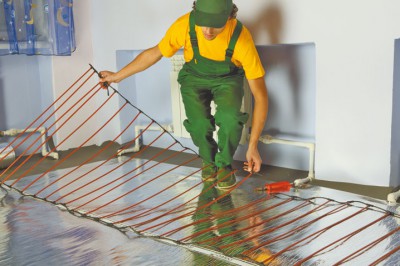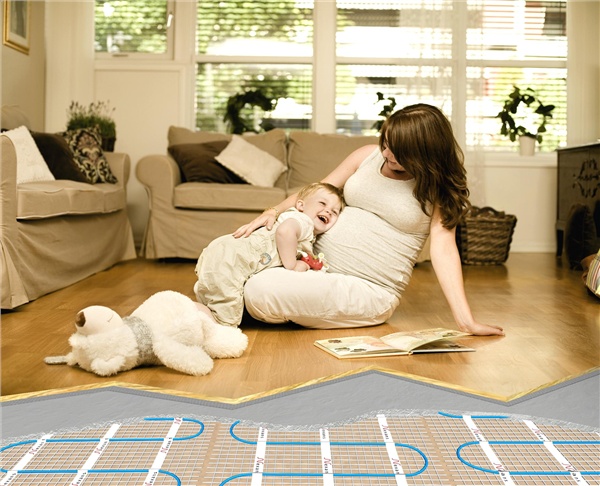Which underfloor heating is better and why: a comparative overview of device options
Probably, today it is not possible to repeat the story masterfully told in the beloved by many New Year's movie. Fortunately, the times of the same type and faceless buildings are in the past. Today, each of us can make our home unique and original, and capital repairs are not always necessary for this. But we are interested in exactly it, or rather one of its stages - the device of the floor. "Which floor is better?" - this is exactly how the question of almost every homeowner sounds, which is faced with the difficult task of arranging it. Why warm? Yes, because the “warm floor” technology is extremely popular at the moment and more and more of our citizens prefer it. To explain this is very simple - harsh climatic conditions.
The problem of choosing a “warm floor” system is, in principle, not architected. However, it is hardly possible to unequivocally answer the question of which floor is better from which company. For specific advice, you need to know the specific conditions and possibilities of installation, as well as operation. We only note that today they can be of two types - water and electric. Electric floors, in turn, can be made in three variations: cable, film or rod.
Content
How does the water system work?
This system involves the use of water as a coolant circulating inside the heating system. Water can be supplied both from a central heating system and from a riser. A very important condition for a water heated floor is the use of a pump that circulates warm water. Although it is possible to install such a system without a pump, the laws of gravity must be especially observed here. However, the effectiveness of such heating will be high only in rooms with a limited area.
Benefits:
- The most budget-friendly type of underfloor heating in terms of installation.
- Low cost of water as a heat carrier in comparison with other energy carriers.
Disadvantages:
- There is a risk of mechanical damage to the pipeline when performing the screed.
- If the coolant pressure in the system decreases, the water floor cannot function without a pump.
- It is impossible to perform such a floor in a city apartment, since there are heating problems with other consumers living in this house. Water from the central system, passing through the "warm floor" system, comes back chilled. Today, there is a ban on the connection of underfloor heating in urban apartments with shared heating.
Connecting such a system requires obtaining official permissions from the relevant authorities.

Classification of electrical systems
Cable floor
At the heart of its functioning is the work of wires made from special component alloys. Wires "know how" to convert electrical energy into heat. The total amount of heat generated by a warm electric floor is regulated by a thermostat, which is an obligatory component of this type of heating system.

Benefits:
- The life of the floor based on heating electric cables significantly exceeds the life span of the water floor.
- Economical energy consumption - the amount of electricity needed is equal to the same needs as conventional household appliances.
Disadvantages:
- There is a small amount of electromagnetic radiation.
- Installation of an electric floor is a rather expensive undertaking.
Ideally, it is necessary to purchase a heating cable, which is accompanied by documents such as a certificate of compliance with the well-known ISO 14000 standard, which is a guarantee of environmental safety of production. And besides, you must have a certificate for the products themselves - KIMA.
Film option
It is a system based on the functioning of a heating carbon film. When connected to an electric network, it emits long infrared rays and anions (negatively charged ions). The role of the emitter is performed by carbon (carbon) paste, which, as a rule, is applied in the form of curved or even strips parallel to each other. In more expensive models, the film can be applied continuous.
Copper-silver conductors are used to supply electricity. And the key parts of the infrared film are sealed with two layers of polyester. Connection to power is via a thermostat. In principle, there are many manufacturers of precisely this specific product on the market. It is still better to find out which company’s system is better in your specific situation from specialists who can really appreciate the tasks that the heating system will have to perform.

Benefits:
- This system is universal in terms of the selection of front flooring. That is, on top of the system, an infrared film warm floor can be laid laminate, linoleum, carpet, vinyl tile, ceramic tile, etc.
- This heating system can be made mobile by attaching it from the bottom to the carpet, which can be cleaned in the summer and spread in the cold season.
Disadvantages:
- The presence of a large number of hidden contacts - before laying, it is necessary to perform a system health test. And besides, you need to control the process of laying the upper floor covering.
- To ensure contact between the film and the wire, you need to use a special connector, crimped by a flat press.
If the top coating is ceramic tile, then it must be laid using a special floor for the “warm floor” system, while the applied adhesive layer must be at least 15 mm thick.
Core system
An innovative and very reliable heating system, characterized by increased environmental safety. It is called: intelligent electric underfloor heating. The main elements are carbon rods, first connected to each other, and then connected to the thermostat and network. Consumers supplied in the form of mats.

Benefits:
- There is no need to think over options for arranging furniture - endowed with the effect of self-regulation. That is, it is not afraid of closing with heavy objects, which can lead to overheating and failure in other cases.
- The cores can be poured without fear with mortar for screeds or tiled glue for porcelain stoneware, tiles, marble, etc. This system can be mounted in rooms with high humidity, on open terraces or driveways.
- Unconditional environmental friendliness in comparison with other types of warm floors.
Disadvantages:
- The biggest disadvantage is the high cost.
- There are a large number of fakes on the market.
Of course, there are differences between these varieties of underfloor heating, but there are many points that are characteristic of both water and electric floors. This primarily relates to the technological aspects of installation.
In accordance with a previously developed project, a pipeline, a special heating cable or a film heating element is laid on a previously prepared base. Further, other layers of the floor cake are stacked on top: as a rule, this is a screed and a front floor covering.
So what to choose?
The answer to this question depends on so many parameters and conditions. For example, the area of the room, as well as its location, is of great importance. If it is a private house or a cottage, then in principle, any system can be applied, naturally after evaluating the economic feasibility from various aspects. While in an apartment located in a high-rise building, the choice will have certain restrictions.
In addition, it is important to understand the purpose of the “warm floor” system. If we are talking about additional heating, created to maintain coziness and a favorable microclimate in the house, then mats or a film heat-insulated floor are quite suitable. In the case when it is assumed that it will perform the function of the main heating, then it would be logical to prefer a high-power heating cable or a water system.
And, of course, the priority criterion in any case should be high quality products. You should not succumb to the entreaties of sellers and buy systems of unknown manufacturers, but certified products with proper operation will serve you for many years.




8 comments